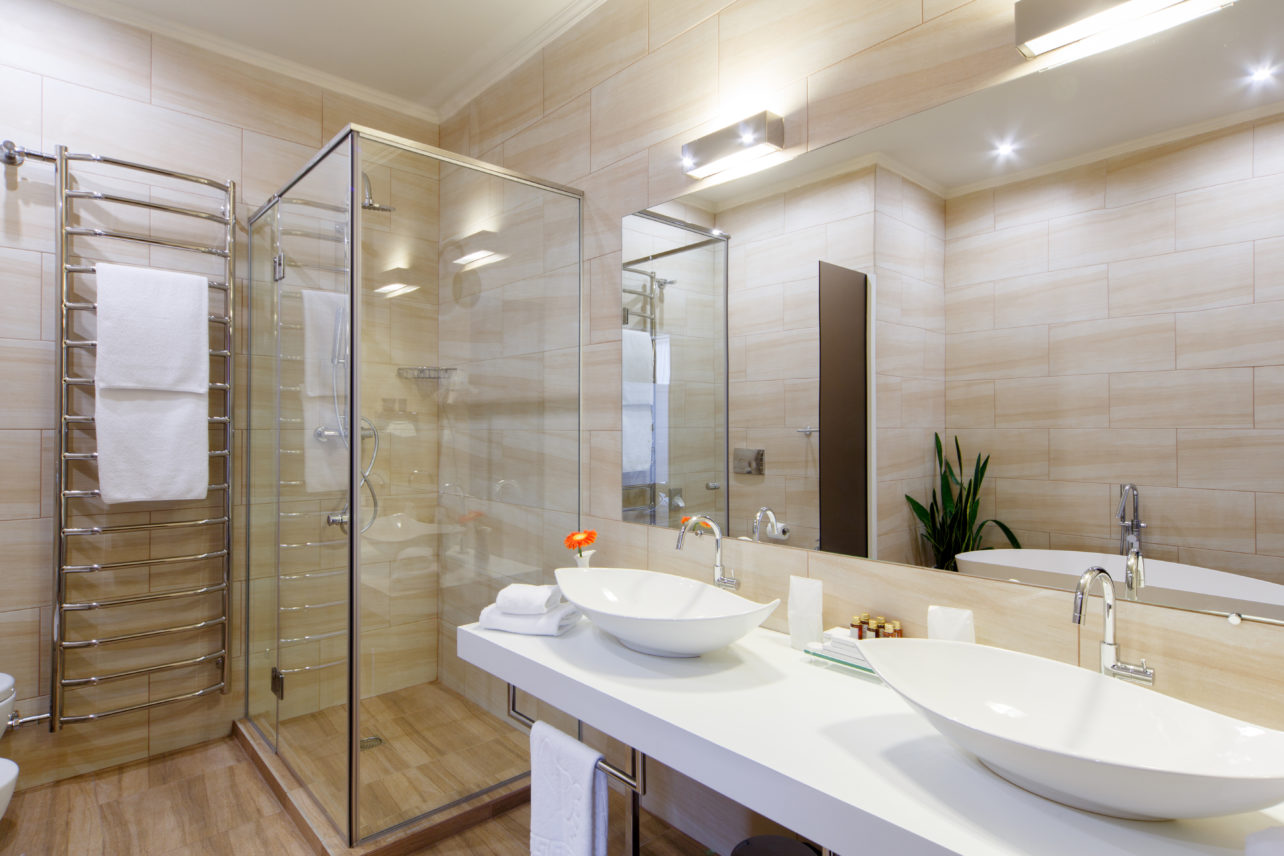We all have to use them. And for a lot of people, a lot of the time, we do, without incident, and without difficulty. It’s simply…going to the bathroom. But just because it’s safe and easy for some—or even most—people does not mean that it’s effortless and risk-free for everyone.
Bathroom safety is often discussed in relation to seniors (as we do in this article), even though bathroom visits can prove a challenge to individuals of any age. Whatever the life stage, the medical diagnoses, the mobility struggles, or the capacity for independence, what matters is this:
Would they benefit from assistive technology?
If the answer is “yes,” then we recommend starting simple, with the three bathroom aids we discuss below to help prevent falls.
Non-Slip Mats: Preventing Slips and Falls in the Bathroom
Let’s begin our brief list with the simplest, least expensive, and most straightforward bathroom assistive device: non slip bath mats.
Most moisture-resistant materials that might be used as flooring or tub splashes will tend to be slippery once water actually hits the surface. There are slip-resistant options for flooring materials or coatings, but that requires installation labor and added expense.
So while you may eventually opt for something more permanent, a non slip bath mat can offer an improvement to bathroom safety, all without breaking the budget or putting the bathroom out of commission for several days.
There is also a variety of styles to choose from. Some are designed to hold to the floor or tub bottom with a series of suction cups. Others look like a metal grate made from rubber. And you can keep it simple with a single bath mat in the tub, or by covering most of the floor in the room with mats if needed.
Ultimately, the objective is just to provide better traction. It’s easier to avoid slipping, even when freshly bathed, if there’s a high-friction material under foot.
Reserved Seating: Shower Chairs and Benches for Increased Comfort
Stepping up a bit in price and complexity, we have seating solutions for baths and showers.
Sometimes the safety risk comes not from the room or activities themselves, but from the prolonged exertion required. “Standing around” may not seem like arduous physical activity, but for those that struggle with it, showering is often the hardest part of their day. And the longer they have to stay on their feet, the greater the risk of a fall, a slip, or some other accident.
Placing a dedicated shower chair in the appropriate spot can help alleviate much of this burden. Sure, you can sit in a tub, and that’s often what they’re used for, but unless that tub is elevated, that effectively means sitting on the floor (presenting a challenge once it’s time to stand back up).
When you’re ready to upgrade to something more sturdy and permanent, you can install a more permanent shower chair or bench, mounting it directly to maximize its stability and strength. The end goal is to have something like a walk-in tub, but the price jump from chair/bench to specialty bath is considerable, so start with this and go from there.
All Aboard: Grab Bars and Handrails for Added Stability
It is remarkable how much good a proper handhold can do, when put in the correct position. If mobility concerns are slight, you can often get away with installation-free, suction cup grab bars. They’re not meant to take full body weight, but if that’s not needed, it will likely provide enough support and stability to make hygiene activities less onerous.
For anyone who’s wheelchair bound, or otherwise looking to accommodate more intensive mobility challenges, you’ll probably want to install fixed rails and bars. Like the support rails in a public restroom stall, when properly fastened in place, these assistive devices can facilitate transitions to and from bathroom fixtures, even if the individual cannot use their legs for support.
Handrails and grab bars can be installed around the toilet, the tub/shower, and anywhere else that might aid in providing the necessary stability to ensure safety.
Honorable Mention: Toilet Safety Frames
Somewhere between handrails and shower chairs in both shape and function, you’ll find toilet safety frames. These products resemble walkers with a lower profile (and minus the wheels), and they are placed around the outside of the toilet seat.
They can provide reliable assistance to individuals who might need help transitioning to and from the toilet, without requiring installation (making them suitable in situations like renting, where installations might not be an option).
They’re Not Called Restrooms for Nothing…
At the end of the day, bathroom aids are as much about providing relief as they are about facilitating activities. While everyone else may go about their business without a second thought, some people experience restroom visits as the most challenging, the most intimidating, or the most uncomfortable parts of their day.
And it’s hard to call them “restrooms” if they don’t exactly live up to the name.
Even if it may feel like it, there’s no shame in needing a little support (pun not intended, but welcome). Go ahead and blame it on the safety risks if that helps make the pill easier to swallow. But don’t be afraid to enjoy the increased comfort, too.
Ensure a safe, happy home for your loved ones using the resources provided on our site. With the right information and careful consideration, you can make the best choice for your loved one’s care and well-being.




